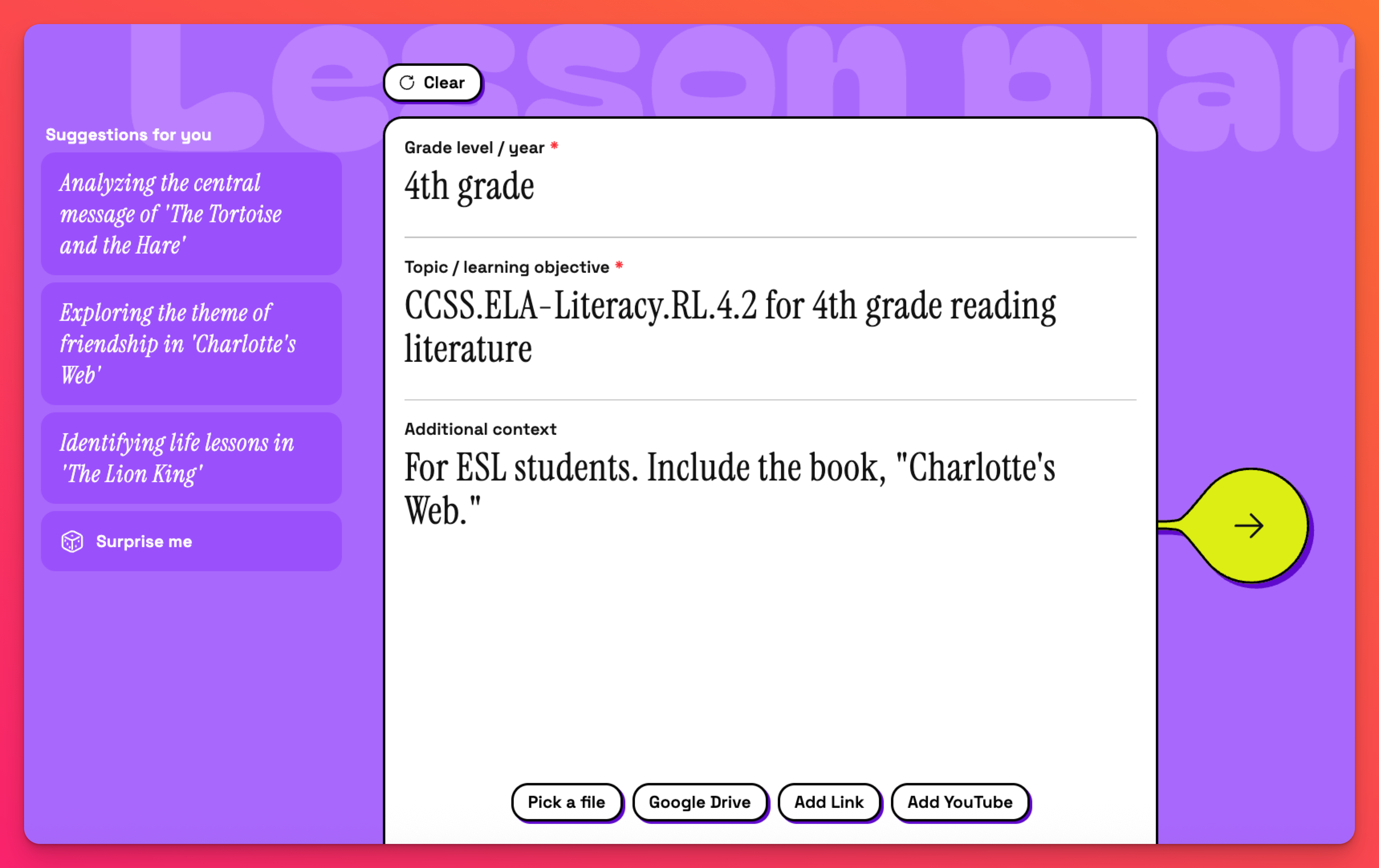Best practices for prompting
Best practices for prompting
When using Padlet TA's AI-powered tools, the quality of your prompts directly affects the quality of the results. Here are some tips to help you craft effective prompts and get the most out of Padlet TA.
Be specific
Be specific about grade level and standards to abide by.
- Always specify the exact grade level (e.g., "3rd grade" rather than just "elementary")
- Include specific learning standards when possible (e.g., "CCSS.ELA-Literacy.RL.4.2" for 4th grade reading literature)
- Reference curriculum frameworks relevant to your region or educational system
Be clear
Always provide clear context about what you are looking for.
- Describe the specific learning objective you're targeting
- Mention any themes, topics, or content areas you want to focus on
- Include details about your classroom context, if relevant (e.g., "ESL students," "mixed ability group")
Be explicit
If you have formatting preferences, be explicit in your prompts.
- Specify length requirements (e.g., "5-paragraph essay," "10-question quiz")
- Indicate any specific components you need (e.g., "include vocabulary section")
- Mention if you want particular question types (e.g., "include at least 2 word problems")

Provide additional context
Use the 'Additional context' field to your advantage. The more clear, concise information you provide, the more tailored results you will get.
- Add special instructions that might not fit in other fields
- Specify themes or topics (e.g., "use ocean animals as examples")
- Mention any content to avoid or include
- Request specific difficulty levels or differentiation needs
Refine through iteration
Refine your results if the original output does not meet your needs.
- If the first result isn't quite what you need, try regenerating the content
- Adjust your prompt to be more specific based on initial results
- Use the feedback from each generation to improve your next prompt
Examples of effective prompts
Basic prompt | Improved prompt |
2nd grade, addition | 2nd grade, two-digit addition with regrouping, word problems based on grocery shopping scenarios |
High school essay | 11th grade persuasive essay rubric with emphasis on evidence use, logical reasoning, and counter-argument analysis. |

